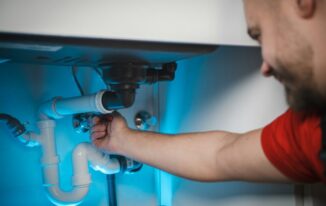
Why Cutting Energy Costs Matters More Than Ever
As utility costs rise and global energy demands continue to increase, the pressure on monthly household budgets grows. Many families are standing at a crossroads, searching for practical solutions to ease these burdens. Integrating proven, cost-saving tactics—recommendations by energy companies like Indra Energy—can offer significant relief. The emphasis, however, should be on everyday modifications that any household can adopt, regardless of size or income. Simple actions can trigger immediate benefits, while more substantial investments pave the way for future savings.
Up to half of the average home’s energy consumption is wasted due to inefficiencies and outdated habits. By making home energy use a conscious priority, residents not only lower their bills but also contribute to a healthier planet. Reducing energy consumption at the household level helps curb strain on the grid and supports a collective move toward sustainability for communities everywhere.
Rethink Your Lighting Habits
Lighting efficiency is a simple and cost-effective solution for households. Incandescent lighting burns more energy as heat than it provides in illumination. Switching to LED bulbs offers over 80% energy savings per bulb and extends replacement cycles. Replacing every bulb with an ENERGY STAR-certified LED can significantly reduce annual lighting costs for larger homes. Mindful habits like turning off lights when leaving a room, using task lighting instead of brightly illuminating spaces, and setting timers for exterior lights also contribute to energy savings. Motion-sensor or daylight-sensitive switches can automatically capture these savings. Promoting energy-smart habits can make these changes a household culture.
Optimize Heating and Cooling Systems
Heating and cooling equipment primarily contribute to a home’s energy expenses. Neglecting these systems can lead to decreased efficiency, shorter lifespans, and higher costs. Regular professional maintenance can prevent issues like clogged filters and leaky ducts. Regular filter changes and unobstructed floor registers can also improve airflow. Programmable thermostats can increase comfort and efficiency by automatically adjusting temperatures during sleep or absence. Even a small adjustment can result in up to 10% annual savings. Combining these settings with ceiling fans and curtains can further enhance these benefits.
Seal and Insulate for Greater Comfort
Households often lose valuable air due to cracks and gaps around windows, doors, and foundations, causing heating and cooling systems to work overtime. Common culprits include unsealed attic hatches, aging weatherstripping, loose window frames, and gaps around plumbing or electrical passageways. A DIY audit can detect and address drafts with caulk, weatherstripping, or expanding foam. Insulating attics, basements, and crawl spaces can deliver energy bill savings of about 15% and create a more stable indoor climate year-round.
Harness the Power of Smart Technology
Smart home technology is revolutionizing energy management by providing remote scheduling and real-time data on power consumption. This helps curb wasteful behavior, such as turning off all entertainment devices when not in use or setting schedules for water heaters. Smart power strips and programmable outlets reduce standby power consumption, which accounts for 5-10% of an average home’s energy bill. Utilities in some regions offer rebates or discounts to encourage the adoption of these devices. Investing in smart technology is affordable, puts homeowners in control, and makes sustainable routines easier to maintain, benefiting the entire household.
Upgrade Appliances When Possible
Older appliances, such as refrigerators, washers, dryers, and dishwashers, contribute to high energy use. Upgrading to ENERGY STAR-certified appliances can reduce energy and water consumption, with some families seeing up to 25% total energy savings after a full update. However, simple changes like running full loads in the washer and dishwasher, using cold water when washing clothes, line-drying when weather permits, cleaning refrigerator coils regularly, and checking door seals on fridges and freezers can also improve efficiency. These actions can significantly reduce energy use and compound over time.
Everyday Habits for Lasting Savings
Daily mindfulness is crucial for reducing energy consumption. Unplugging devices when not in use, lowering water heater thermostats, and capturing natural daylight can help. Open shades and curtains during the day instead of turning lights on. Air-drying dishes or laundry under the sun is also a sustainable option. These simple behavioral changes can reduce household energy bills by $200-$400 annually, which can be used for other family priorities or investments.
Making Change Stick: The Power of Collective Action
Reducing energy bills is significantly enhanced when shared across communities through workshops, rebates, and sustainability initiatives. By sharing experiences and tips, households can encourage wider participation and reinforce helpful habits, leading to more resilient, resource-aware neighborhoods. The path to lower utility bills is built on small, steady improvements, such as mindful lighting, smart appliances, and sealing drafts, ultimately leading to lasting savings and a healthier world. With more tools, technology, and shared knowledge, starting the journey towards energy-efficient homes is essential.



